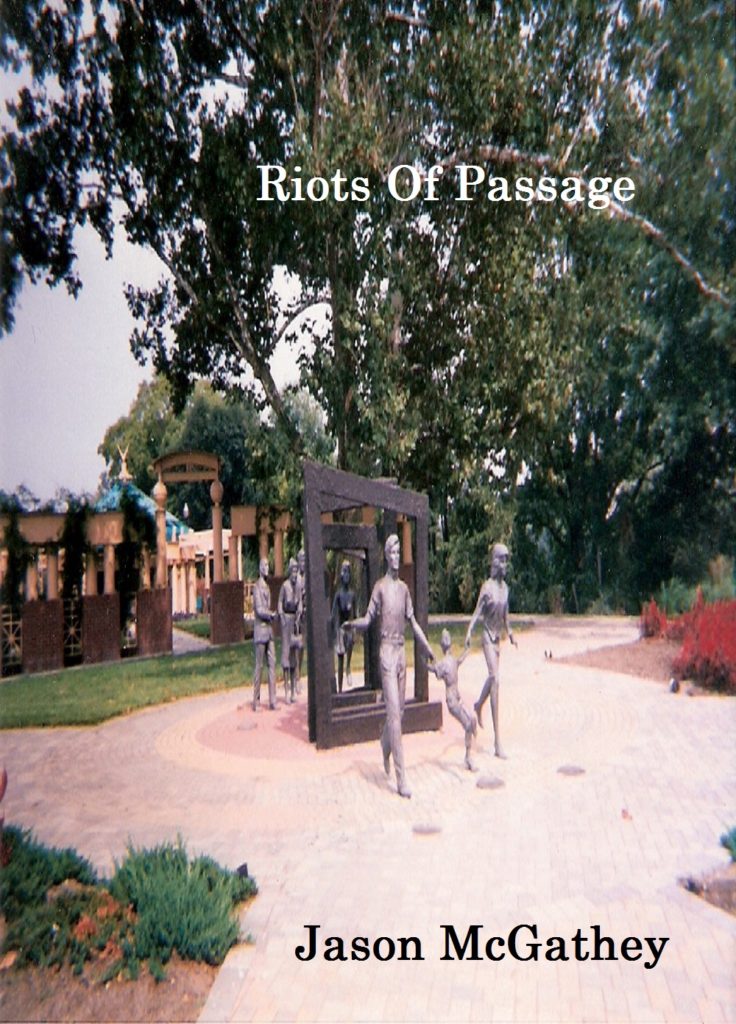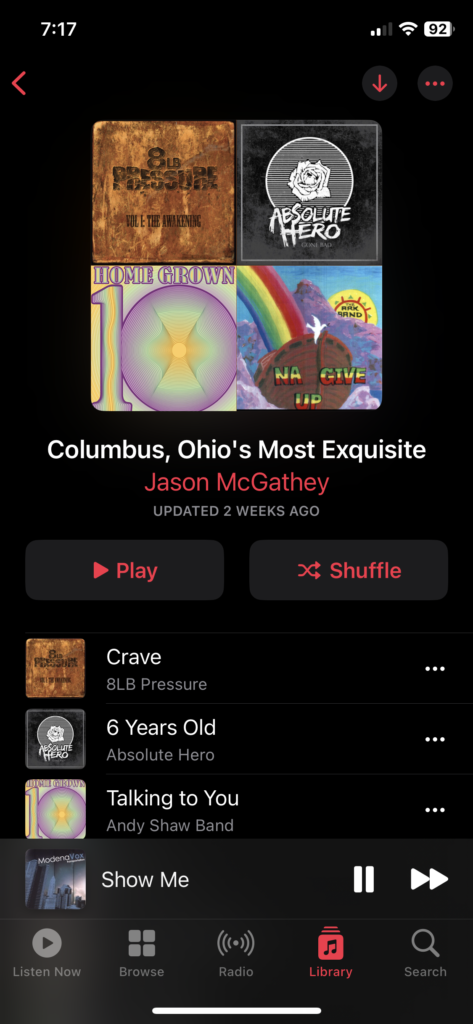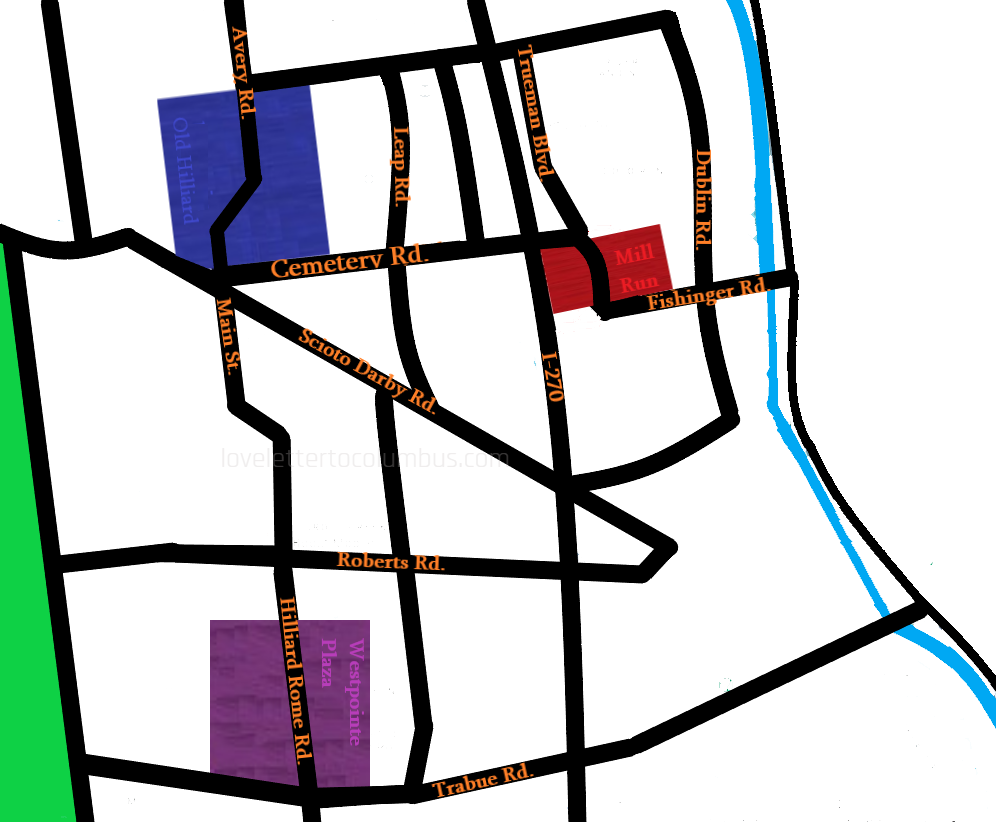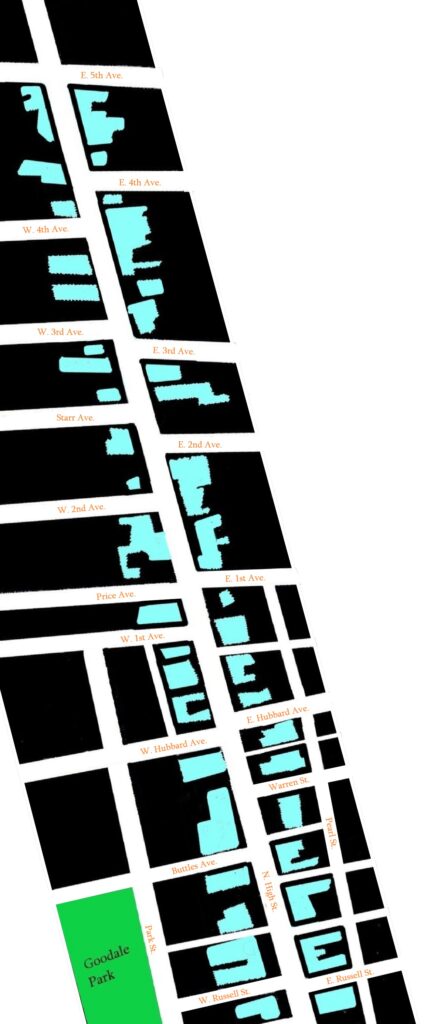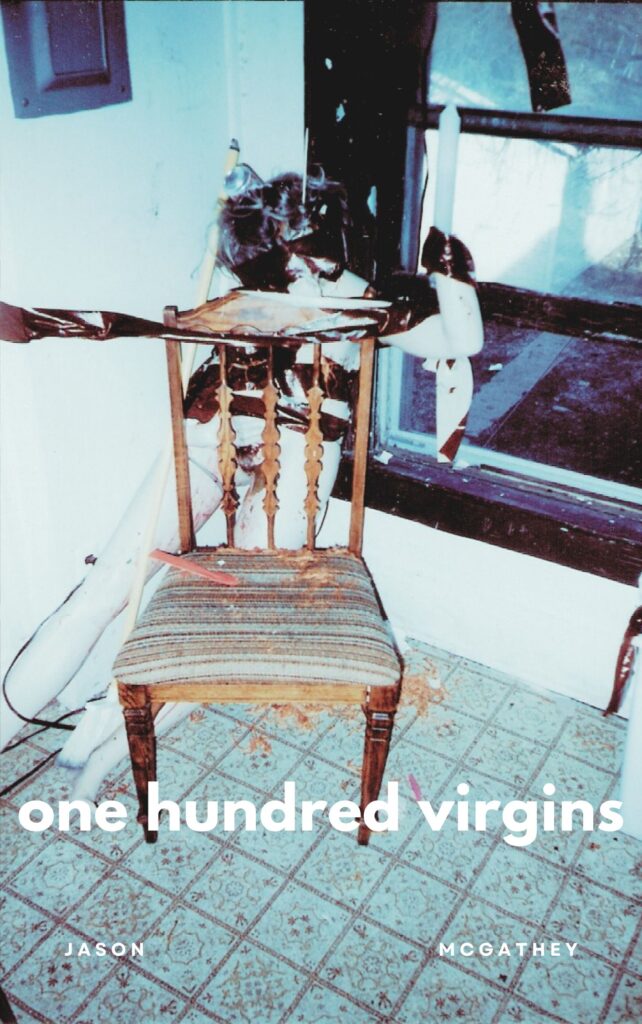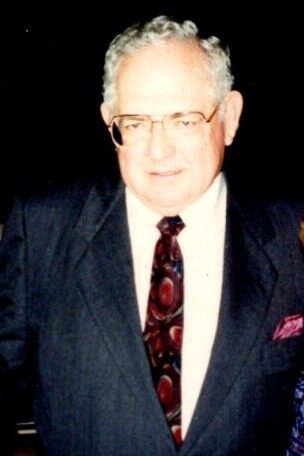
On this page, I will be discussing noteworthy people who hailed from this fair city, or else made a significant impact upon moving here. I’ve been torn on what to do about OSU athletes, who typically blow into town for 3-4 years and then right back out again, though the Columbus days might represent their most popular era. But I think that will get its own separate post at some point, alleviating this dilemma.
Hanif Abdurraqib
A relatively new-ish writer I’ve started getting into. I had heard about him somewhere, reserved one of his books from the library…and only then learned, upon cracking it open, that he was actually from Columbus. I always love it when things like that happen, because it feels like the universe is sending some giant flashing arrows pointing the direction out for you, that you are headed the right way.
He’s got a strange style that I really dig, both in making some unexpected connections between various topics, but also from the literal style itself – the way he constructs his sentences and the pieces as a whole. The first book I read of his was the essay collection They Can’t Kill Us Until They Kill Us, which is mostly I would say concerned with music criticism. Even here, however, you encounter this unique combination of some really deep insight, yet presented without a ton of academic stuffiness. It’s a potent cocktail that mostly works, to great effect.
On the very first page of that one, he makes an oblique reference to attending Red, White, and Boom, and from there, Columbus references abound: among those that I pick up on are a NOFX show at the Newport Music Hall, Huntington Park, Bexley, Constellations playing at The Basement and their Alpha EP, the band named Defiance Ohio, Scottwood Elementary, Livingston Avenue, MarShawn McCarrel, this Replica of Wales Window from the rebuilt 16th St Baptist Church, a Fall Out Boy show at The Basement, Capital University (here during 9/11, plays soccer), the King-Lincoln Bronzeville district, John Glenn Airport. The most hilarious segment for me though was clearly the one where he’s ripping on Twenty One Pilots.
His next essay collection, A Little Devil In America, doesn’t feature quite as many specific Cbus references, but is equally compelling from a quality standpoint. In that one I know he mentions this former bar on King Avenue called Hampton’s, and German Village, and some noteworthy graffiti spotted in various locations around town. Also discusses his high school without (as far as I noticed) specifically naming which one it was. Although it says on his Wikipedia page that he graduated from Beechcroft, so that must be it.
George Bellows
As one of the celebrated “Ashcan” artists of the early 1900s, Bellows seems to have recognized his calling in life at a very early age. Even in elementary school, his teachers would often adore their classrooms with this artwork. He was also a decent baseball and basketball player, taking all these talents with him to OSU, where among other things he contributed drawings for the student yearbook. Upon graduation, his parents were hoping he would do something a little more “respectable” career-wise. But, alas, he moved to New York City and became a famous painter instead.
Bizzy Bone
This founding member of celebrated hip-hop group Bone-Thugs-n-Harmony happens to be the only one who doesn’t originally hail from Cleveland. That’s right, he actually grew up here, at least up through the age of four. His story is far crazier than you might be aware, however, considering he was abducted at that age and taken to Oklahoma by his mom’s boyfriend. The authorities only found him a couple of years later, after his photo appeared in the end credits for the movie Adam.
Unlike many of the other future celebrities in this post, however, he did in fact return to Columbus and continue to maintain roots here. In fact, he was spotted constantly in the Morse Road Kroger where I worked. During these occasions whispers would circulate through the store mighty quickly: “Bizzy Bone’s here…psst…Bizzy Bone just came in the store!” So I think he must have lived nearby. Yet although always into Bone Thugs from their first album onward, I’m not quite sure why, either I was too timid or too cool at the time, but I never shouted out a hello and certainly never ran up to speak to him. Which now seems quite stupid.
Pat Borders
Referring to his semi-obscure catcher as “famous” might be a stretch, but I think anyone who makes it to the major leagues has a somewhat legitimate claim to that title. And he did after all win a couple of World Series, in fact was MVP of the ’92 Fall Classic. Yes he did move to Florida at a young age, just one of the many figures on this list who doesn’t have any apparent Columbus ties beyond that point. But he played for Indians for 3 years, so that’s something, and is also oddly enough one of just two American born players in history to have won a World Series and an Olympic gold medal (stranger still, both hailed from Ohio.)
Bernie Casey
When I worked at Wild Oats, we had this janitor we referred to as “U.N. Jefferson” based upon his vague resemblance to that character from Revenge Of The Nerds. Unbeknownst to us at the time, however, the guy who actually played U.N. Jefferson in the movie…graduated from East High School, right here in Columbus!
Talk about a mind-blowing coincidence, when eventually discovering this. But in all seriousness, Bernie Casey would wind up enjoying a fascinating career, clear up until his death in 2017. He starred at Bowling Green as an athlete, made All-American while there, then spent 8 years playing football in the NFL, during which he made one Pro Bowl and enjoyed moderate stardom. And only then did he get into acting, eventually compiling a far more illustrious resume than I’m sure even he could have possibly envisioned – one that will include numerous guest spots on TV, appearances in a Scorcese movie and a James Bond movie, a surprising amount of other hit films but then also, yes, possibly his most famous role, in a few chapters of that Nerds franchise.
Beverly D’Angelo
This famous actress is from the Upper Arlington area. Her grandpa, Howard Dwight Smith, designed the Shoe, among other buildings around town, and her dad, Gene D’Angelo, worked at WBNS.
Jay DeMarcus
Bass player for Rascall Flatts hails from Columbus and lived here his entire childhood. He attended the Tree Of Life Christian school and also that Fort Hayes magnet school.
Buster Douglas
This unknown boxer came from out of nowhere in 1990 to take down an undefeated Mike Tyson, thus winning the heavyweight crown.
Guy Fieri
Vaguely amusing Food Network guy who reminds me of my old friend Doug, except with spiky blonde hair. This is the sanitized TV version of Doug, mannerisms intact but minus the foul behavior. If left to his own devices, however, Doug would have come up with a way better show than Diners, Drive-Ins, and Dives.
In his first ever book, 2008’s Diners, Drive-Ins, and Dives: An All American Road Trip…with Recipes! Fieri lists his top 60 restaurants in the country. Not a single Ohio eatery makes the list, much less one from Columbus. I alternate between thinking this is completely ridiculous, versus grudgingly admitting it’s kind of cool and maybe displays a little integrity. Then again, if he couldn’t find a single restaurant from his hometown to list among the country’s finest, he probably wasn’t trying hard enough. Then again, I think he moved away from Columbus at a fairly early age.
Hank Gowdy
In a town famous for its athletes, he just might crack the top ten list for those born here. And is likely the most famous baseball player who took his first breath in Columbus. His statistics actually don’t look that remarkable, although in a 17 year MLB career, interrupted by his service in WWI, he compiled a solid defensive track record. But what he’s most known for today, apart from appearing in a few World Series and winning a couple of them, is that he was the only major leaguer to serve in both World Wars – that’s right, at the age of 53, he went right on ahead and enlisted all over again. In 1918 he was in fact the first MLB player to enlist in WWI, period. He later went on to manage the Cincinnati Reds, among other coaching gigs. After dying at the ripe old age of 76, Gowdy Field was named in his honor, and he is buried here in Columbus.
Unfortunately, Gowdy Field fell into disrepair after a number of years. Owing to its prior status, it is given a West 3rd Avenue address, although the actual field part remaining is nowhere near 3rd Avenue now.
Bob Greene
You know, it’s surprising what wacky careers a lot of these people have had, even ones you maybe sort of thought you knew quite a bit about. Greene, who was born in Bexley in 1947, would become an award winning journalist for the Chicago Tribune, in addition to providing commentary on the TV news show Nightline. He has also written countless popular books.
Prior to this, though, there are the expected cutting teeth type stints working for a couple Columbus papers. Okay, that’s all well and good and mostly expected. But then also what about his time spent singing and playing guitar on the road with the surf rock group Jan and Dean? Huh? Oh yeah, and he went on to play…Santa Claus…for Alice Cooper’s tours in the early 1970s.
Well, I mean, it doesn’t sound like this guy left much on the table, I have to tell you. If curious to find out more, his books And You Know You Should Be Glad and Late Edition cover his early days growing up in Bexley and working for those C-bus papers, respectively.
Rahsaan Roland Kirk
Ah, now this is more like it. This internationally renowned jazz musician was born in the now defunct Flytown neighborhood in 1935. An accident at the age of 2 rendered him blind, although it’s likely that the unfortunate loss of this sense did heighten his musical sensibilities. He would later study at the OSU School For The Blind and is in fact most likely its most famous alumnus. At the time, locals mostly thought his music sucked and he had to travel elsewhere to gain an audience – only much later would C-bus realize the error of its ways and come to embrace his excellence. Sounds about right. Mayor Jack Sensenbrenner did apparently announce on December 10, 1970, that it was officially “Rahsaan Roland Kirk Day,” but its honoree had long since left town by this point.
Roy Lichtenstein
This famous modern artist lived on Iuka for a while, near the OSU campus, and now has a statue at the airport.
Lil’ Bow Wow
Although he would soon drop the “Lil'” from his name, I think most of us can agree that Bow Wow (Shad Moss) is still mostly referred to by this name. This rapper’s big claim to fame is he was performing at some L.A. show at the age of 6 and somehow caught the attention of Snoop Dogg. He would appear in the video for Gin N’ Juice a short while later, then eventually launch his own recording career at the ripe old age of 13. He enjoyed some top ten hits and even headlined the movie Like Mike, and is still somehow just 37 as of this writing.
Jerrie Mock
Almost nobody knows that she is the first woman to fly solo around the world, which is kind of sad. I feel like 99.9% of the people on the planet would get this wrong – as would I, until stumbling upon this factoid during my research here. She left Columbus on March 19, 1964 and returned just shy of a month later, on April 17. I’d never heard of her until recently, but love this story now. Which I guess is the point of this historical digging. This still seems somewhat insane to me, actually. How many of us, even now, for various reasons, would have problems flying around the globe in less than a month? Her plane was called Spirit Of Columbus and the TV show Family Ties once used that name for an episode, too – though it’s unclear if this was a coincidence, or intentionally done in her honor.
Jack Nicklaus
Everyone knows that he still holds the record for lifetime Majors won, which Tiger Woods has yet to take down despite his many comebacks. But these are all yawn inducing, in a way. What is local legend Jack Nicklaus really like, behind the scenes? This is what the people demand to know. Well, I can tell you that my stepdad caught him in action once during a Memorial tournament, and was less than impressed. He happened to be standing in the clubhouse and by chance witnessed the Golden Bear exiting a men’s room, at which point the golfing legend immediately reamed the nearest random employee, in front of everyone present, over the condition of said restroom.
Employee: Yes, Mister Nicklaus, I will take care of that as soon as possible.
Jack Nicklaus: No, you will take care of that now!
The spectators present, in a possible foreshadowing of his actual performance that day, exchange horrified glances. This is pure speculation, but I am hazarding a guess that the ongoing weather conditions at his signature tournament may have played a part in Jack’s foul attitude. If you do your research, you will discover that they basically bulldozed over Native American figurehead Chief Leatherlips’s stomping/burial grounds to build this golf course. From which point it began mysteriously raining at the Memorial tournament every year, except in the years it snowed. In late May. In more recent years they even tried moving the tournament up a week, except it has begun raining that weekend instead now. Naming a nearby road after Leatherlips has failed to appease him. I think you might have to knock off Nicklaus and/or reforest the golf course to reestablish this delicate balance.
Lest you think this superstitious nonsense, be advised that Barbara Nicklaus, Jack’s wife, has twice brought a glass of gin to place at Leatherlips’s current grave, upon hearing rumors that this would remedy the situation. The second time, the not-at-all-desperate-or-washed-up-jackass golfer husband drove her there. Although dismissing the entire plot as hokum, of course.
Paul O’Neill
Not to be confused with the former Secretary of the Treasury who spells his name the same way, this Paul played major league baseball for the Reds and Yankees from 1985 to 2001. He won a batting title in ’94, was named to a handful of All-Star teams, and is one of just 30 players to have won 5 World Series titles (one with the Reds, four with the Yankees). Oddly enough, he is also the ONLY player in history to have played on the winning side of three different perfect games. As far as his local ties are concerned, he went to Brookhaven High School.
I always thought he seemed like a cool, low key kind of guy. An impression that’s bolstered by listening to him in the broadcast booth after his playing days ended. Of course, all the modern reader probably cares about is that he also appeared in an episode of Seinfeld.
Tom Poston
This actor is most famous as a regular on Newhart, but guest starred in what looks like approximately every TV show you ever heard of from the 1950s up through 2007. He was born here in 1921, and graduated high school here, but doesn’t appear to have had much to do with C-bus beyond this point.
Brady Quinn
Even rarer a specimen than the Archie Griffin/Michael Redd type athlete (born here, starred at OSU) is one like Brady Quinn: born here, but starred at a completely different college. In his case, after setting the world on fire as a QB at Dublin Coffman, earning him mountains of praise in the Dispatch and elsewhere, he enrolled at Notre Dame and set numerous records there. Then the NFL came calling, beginning with a busted stunt helming the Browns, although he did manage to stick around with various teams for 7 seasons.
Michael Redd
You’ll see some conflicting reports, but most have it that future NBA star Michael Redd was born in Columbus. At the very least, he definitely grew up here, and attended West High – this makes him one of those relatively rare athletes who not only starred at OSU but actually hailed from our fair city as well. I remember following the big season, I think it was ’99, when he and Scoonie Penn took the Buckeye basketball team deep into the March Madness tournament. In 2000, he was drafted by the Milwaukee Bucks, and would wind up playing eleven seasons for them, followed by a final hurrah with the Phoenix Suns.
Eddie Rickenbacker
This world famous fighter pilot from WWI was born in Columbus and would eventually have an airport named after him here. At the age of two or three, his family purchased and moved into a house on Livingston Avenue, where he would live for the remainder of his childhood. Rickenbacher (as his name was originally spelled, before he changed it as an adult) worked as a teenager for both the Oscar Lear Automobile Company and Columbus Buggy Company. Prior to his career as a pilot, he was actually a race car driver of considerable reknown. And then in the 30s and 40s, oddly enough, he penned a popular comic strip named Ace Drummond. Upon his death in 1973, he was buried in Green Lawn Cemetery.
Arthur M. Schlesinger, Jr.
Born in Columbus and just like his daddy (a historian at OSU), Junior here would make his name mostly in the field of American history. He won a pair of Pulitzer Prizes for his books – exactly twenty years apart – wrote speeches for presidential candidate Adlai Stevenson, and later even worked for JFK as a historian. Unfortunately, like many of the figures on this page, he does seem to have basically blown out of town at an early age and had little to do with Columbus as an adult.
Alice Schille
Another famed painter, Alice enjoyed a long, incredibly prolific career spent living and eventually dying in Columbus. She attended Columbus Art School before continuing her education in New York. But then also traveled extensively, picking up considerable knowledge in the process, along with numerous awards such as the gold medal in a 1915 exhibition at Pennsylvania Academy of the Fine Arts.
She is mostly known for her watercolors, forever (or at least we’d like to think) putting to bed the disrespect often paid to this medium. Her work is still on display all over this city and beyond. Following her 1955 death at the age of 86, she was buried at Green Lawn Cemetery, just like Rickenbacker and many of these other notable figures.
Jeff Smith
This cartoonist, creator of the Bone comic book series, has lived in Columbus for most of his life. Its origins trace back to a strip called Thorn he contributed to OSU paper The Lantern, however, as some of the characters first appeared there. So yeah, after graduating from Worthington High, he enrolled at Ohio State. Then he and buddy Jim Kammerud formed an animation studio called Character Builders, during which they created ads for White Castle and the introductory sequence for a Jack Hanna show called Super Safari, among other noteworthy gigs.
Only later, in 1991, would he launch the Bone series and form his own comic book company. My friend Kevin Spain briefly worked for Smith in some sort of office lackey role during the early years, and says he’s a really nice guy. Nonetheless, though I own a couple issues and have tried getting into it, I am forced to admit that this just isn’t my cup of tea.
George Steinbrenner
This future owner of the New York Yankees was assigned to Lockbourne Air Force Base in 1952. Though he and his family were based more out of Cleveland, George would maintain close ties with Columbus all the way up until his death. At Lockbourne, he was first an aide to the commanding general, then was placed in charge of its athletic program.
He also coached their baseball team! Once, during his first season of doing so, OSU’s junior varsity squad showed up for a game, much to George’s distress. When making the schedule, he thought he was booking a game against their varsity team. Thus, is shouting at them to stay on the bus and to drive it back the way they came. Is further enraged when their coach talks him into playing anyway, and they proceed to pummel Lockbourne. Elsewhere on base, he runs track and sets the record for the 440 yard low hurdle. Also sets up some kind of coffee and donut operation, selling these out of trucks around the base.
In 1954, George will wind up transferring to Ohio State, to pursue his Master’s degree in phys ed. Attends a ton of football games, hangs out watching practice. During this time he’s also somehow employed as the assistant football and basketball coach at St. Thomas Aquinas High. George has at least one class with star OSU running back Howard Cassady, and the two become good friends. Through Cassady, Steinbrenner will meet his future wife, fellow OSU student Elizabeth Joan Zieg. Her dad, Harold Zieg, was a bigtime local developer and Buckeye football booster.
The Steinbrenner stories tend to weave in and out of town from this point forward. In 1973, while attempting to purchase the Yankees, he will enlist one of the Lazarus heirs, Charlotte Witkind, as a minority investor. Six years later, he moves their AAA minor league team to town, and switches its name from the Jets to the Clippers. There is one amusing anecdote from July of that year, when Steinbrenner has just flown into town to check up on the team. After landing at Columbus International, he catches a cab and is en route to the hotel when he happens to hear Clippers manager Gene Michael being interviewed on the radio. It’s a local station and the interviewer is asking him if he would like to have the recently opened manager post up in Cleveland. When Michael admits that he might, George flips out and tells the cabbie to drive him to Cooper Stadium instead. Lurks around in wait for Gene to show up, and then verbally assails the dude when he does. Although cooler heads eventually prevail during this same conversation, and Steinbrenner offers him a GM job with the Yankees instead.
I happened to see Steinbrenner around town here just once, having breakfast at the Damon’s where I worked. We peeked around the corner, watching him dine with some other guy, but were not about to approach and interrupt. Everyone said he was part owner of either the attached Parke Hotel or the restaurant or both, although I’m not sure to what extent.
Jermaine Stewart
Singer most famous for We Don’t Have To Take Our Clothes Off was born here in 1957. And just off the top of my head, up until Twenty One Pilots came along, I might say that’s the biggest hit ever for a Columbus born musician, that I’m aware of. His family did move to Chicago, which is where he ultimately first made his mark, but this didn’t happen until he was a teenager.
R.L. Stine
I somehow only recently learned that this author is from Columbus, even though he has to be the best-selling writer this city has produced. James Thurber is surely still more of a household name, however, so that’s something. I was a little too old for Goosebumps and Fear Street, his most popular series, but a recent Netflix trilogy based on the latter was very good. Born in Bexley, he attended OSU and even worked on The Sundial for a few years. He then created the magazine Bananas (which seems vaguely familiar) and since then has published a mind numbing arsenal of books. It will seriously make your brain hurt to look up a list of all the stuff this dude has written. And here I feel like some battle tested warrior for cranking out one short article a month. Pssh. Even though, to my knowledge, I’ve not read any of his books, and can’t speak of the quality, this is still a mighty impressive resumé. He also apparently had a cameo in the first two Goosebumps movies.
Dave Thomas
Though he only wound up settling here in roundabout fashion as an adult, Columbus was the site of his breakthrough business triumphs, and he remained a fixture on the scene basically until his death.
I didn’t realize how much he had going on in Cbus until reading his autobiography, Dave’s Way. Though presented as a somewhat wacky motivational book giving “tips” to aspiring entrepreneurs, I have to admit, this was way more engaging than expected. Then again, I was cracking up long before page one, just to observe Jack Nicklaus’s bullshit soundbite on the back cover. Here’s the quote in its entirety:
“Dave has written an entertaining book, which I am sure you’ll find very enjoyable.”
Okay, so the Golden Bear clearly didn’t even read the thing. I’m conjuring up this mental image of it sitting on this table beside his front door for a couple of months. Then maybe he’s passing through the headquarters of Jack Nicklaus, Inc. one day and the secretary is holding her hand over the phone receiver, telling him Dave Thomas is on the line asking about some praise for his book jacket. A slightly out of breath and irritated Jack recites this nonsense on the spot before continuing to his office.
But anyway, onto the specifics. Most of this I had no clue about apart from the big ticket items about Dave opening the first ever Wendy’s in Columbus. So here are some of the major points. Apparently, while working as assistant manager for a two store restaurant chain in Ft. Wayne, Dave Thomas became one of the first people in the country to get mixed up with Colonel Sanders. The old colonel I must say comes off as a dangerous if crafty lunatic in many of these pages.
Anyway, Dave became somewhat smitten with Col. Sanders’s business acumen and even took to wearing white suits with black string ties himself for a while. There’s a hilarious photo in this book of the two of them side by side at the Ohio State Fair, sporting this very getup, as Dave is holding a trophy for some “Grand Champion” chicken they presented here.
How they got from Ft. Wayne to Columbus is itself pretty fascinating. In 1959, the colonel gets this idea about hooking up a couple of real estates buddies he has in Cbus, with Dave Thomas’s boss over in Indiana. His name is Phil Clauss, and he owns that two store Hobby Ranch House Take-Home operation (I couldn’t even begin to tackle the origin of this name here, so don’t ask). Sanders approaches Clauss about opening some restaurants in Columbus. These figures agree to combine forces for this venture, although Clauss, to his credit, insists he will only do so if his “vice-president,” Dave Thomas, who is in fact still manning a grill every day, is appointed operational advisor to this program.
In the early going, Dave’s driving to Columbus once a month, but this business is bombing out miserably. Finally the three guys running the show (Sanders is more in the background barking orders at this point) convince Thomas he needs to actually move to Columbus to straighten out these clowns. Clauss is confident enough in his boy here that he buys out the other two guys, and works out a deal with Thomas that Dave can have 40% of the company if he manages to turn it around.
His first order of business is to clean house. One of the lists he’s included in this book, Dave’s Six Steps For Bringing Back A Dying Business, is absolutely priceless. Much to my delight (and surely many a coworker I’ve had over the years would feel the same way), Tip #1 is “get rid of the dead wood in management.” Anyhow, after mission accomplished on this front, he also installs air conditioning at the four restaurants, trims the menus way down from a positively insane 100 offerings to maybe a dozen…but then also renames them the still quite baffling Colonel Sanders Kentucky Fried Chicken Take Home. More hilarious yet, the namesake himself, Harland Sanders, is telling Dave he’s nuts and should pull out of town before it’s too late.
Even so, however improbably, things are on the upswing. Dave and the family buy a house in Westerville, and things improve to the extent that a 5th restaurant is opened in ’67. By this point he has made good on his deal with Clauss and now owns 40% of these puppies. He tries out all manner of wacky promotions, down to teaming up with this ice cream place across the street from one location on BOGO type deals between the two businesses. Most significantly, Dave has this idea about rotating, illuminated chicken buckets for the company signs, which Sanders instantly falls in love with and installs at KFC locations everywhere. So, yes, the world famous Kentucky Fried Chicken Of Ft. Wayne Indiana actually owes this debt to Columbus Ohio.
On to more pertinent points, a year later, in 1968, KFC has exploded to the extent that Clauss and Thomas sell their five Columbus stores back to the parent company at a huge profit. Dave’s then kind of slumming it for a while with various corporate roles with KFC before quitting, after a tiff with his higher-ups. By this juncture he’s already a millionaire anyway and doesn’t need this crap. He accepts a job running Arthur Treacher’s while he contemplates his next move. Having purchased a car from Immke Buick, he’s become good friends with that local dealership’s kingpin, Len Immke, and the two of them often hit the Columbus Athletic Club to work out together, while Dave airs his thoughts on ideas to revolutionize the fast food hamburger industry.
Dave says the two of them commonly drink beer in the steam room while discussing these concepts. Which might defeat the purpose of hitting the gym in the first place, although you have to admit it’s kind of cool. Anyway following one of these powwows, they decide to swing by the club’s diner for lunch, only to discover it’s closed. This sets off a life changing rant by Immke.
“See, Dave it’s what I’ve been telling you,” Immke says, “it’s tough to get a meal downtown at the noon hour. We really ought to have a hamburger operation down here.”
Something clicks in this moment. In a virtual instant, Thomas decides to buy this business space from Immke, on West Broad Street. It’s a closed down restaurant that Len had fairly recently purchased from former New York Yankee great Tommy Henrich. At the time of this conversation it’s being used to stage brand new Buicks before they reach the showroom at Immke’s dealership down the street, and the bar area is entirely cobwebbed from disuse. These two are driving around Columbus one day and Dave, after mulling over this matter an eternity, suddenly latches upon the name Wendy’s, a nickname for his youngest daughter Melinda.
This first location opens on November 15, 1969, with three full-time employees. In this book, which came out in 1991, Dave mentions that original employee Gloria Ward Soffe is still with the company, which is another heartwarming touch to read about somehow. The mayor is on hand for this opening, as is company mascot Melinda, in pigtails with blue bows in them, who at 8 years old admits halfway through the day that smiling so much is making her mouth hurt.
That stuff about the opening is somewhat common knowledge, though, and vaguely familiar to me. What I didn’t realize, however, is that the second ever Wendy’s location was opened on Henderson Road, about a year later, and that this is the first one with a drive-thru window. Both here and elsewhere, they actually attempt operating separate grills at this restaurant, a distinct kitchen each for the dine-in and drive-thru customers, for a number of years. All the more zany, it bears mentioning, Dave was somehow still on the payroll at Arthur Treacher’s, too, doing the same theoretical work as always, and the 2nd largest stockholder, until he was certain this Wendy’s concept would really take off.
When it was still a two store operation, he cut in a trio of local friends on ownership, and the four of them cleaned house after Wendy’s went skyward. One of them, Ron Musick, was renting an apartment in Worthington at the time, and essentially told his wife to piss off when she was questioning this investment. This foursome moved into an office on Henderson, one which also housed a Coca-Cola arm of sorts, some Anchor Hocking glass operation, and other oddball businesses. Dave recounts here that, although at the time of writing this book, he was sitting in a much fancier office up in Dublin, that these Henderson Road days were actually his favorite. The four of them and their wives were here all the time, in this cramped but vibrant atmosphere, and there were days where they had hundreds of thousands of dollars stacked in the hallway, despite the other businesses in the building, if the banks happened to be closed at that hour.
By 1979, Dave Thomas is receiving a Horatio Alger award from Norman Vincent Peale at the Neil House downtown. OSU donates a chair for his fancy office up in Dublin, joking that he never had enough seats at the original location. Still, though we are definitely in victory lap terrain by this point, it’s impressive how he keeps pumping up the legends of even obscure local people he has known throughout the years. Roger Webb, who was just a student in the accounting department at OSU way back in those early days of Wendy’s, grinding his way through this fast food gig for pocket change, is mentioned as having made many important contributions during totally random conversations he had with Dave in that Broad Street restaurant. Thomas is also quite enthralled with this Jim Near character, a Columbus figure who is eventually appointed chairman of Wendy’s.
In summary, I think Dave was probably a mostly cool older guy you would have rolled your eyes at if working for, even as you reluctantly learned a few things from him. It’s nice to see him mention in passing a few charitable things he did, too, to give back to the community. Recreation Unlimited, a camp for the disabled which he was encouraged to support by sportscaster Jimmy Crum, and Charity Newsies, a vaguely familiar concept I seem to remember, where they would sell newspapers on street corners to buy clothes for kids, were a couple of his pet causes. Daughter Pam was also in charge of the volunteer program in Columbus as well.
My parents actually went out to dinner with Dave Thomas once. The photo above is taken from that night, though I’ve cropped them out of it – sorry, folks, but you don’t quite make the cut on this particular post. In case you’re wondering, though, what restaurant did Dave immediately recommend, during a brief discussion on where to eat? Why it was Wendy’s, of course, and this is precisely where they went.
Philip Michael Thomas
Actor most famous for playing Tubbs on Miami Vice was born here in 1949 but moved away at (you guessed it) a very early age.
Kenan Thompson
This highly entertaining actor technically hails from here, yes, but might have set a record on this page by leaving town before he was even a year old. And therefore it’s highly unlikely he gets too teary eyed reminiscing about ol’ Columbus.
James Thurber
I recently finished The Years With Ross, which is a memoir about his time spent working at The New Yorker. This is the first thing of his that really made much of an impression on me. We did, of course, have to read The Secret Life of Walter Mitty in high school, and while that famous short story does have a memorable premise that you basically never forget, I wouldn’t say it meant much to this particular teenager at the time.
The Years With Ross has a great atmosphere to it, though, about life on a magazine staff, and is also laugh-out-loud funny in spots. Mostly it is of course concerned with NYC tales, although Thurber does include a few short anecdotes about Columbus here and there.
I also have Fables for Our Time and Famous Poems Illustrated in my collection, and just read that one. The first few paragraphs have you thinking that this is going to be a silly enterprise, but it’s actually pretty hilarious much of the time. In fact, these days I mentally lump Thurber in with Twain because it’s surprising to me how funny these guys still are after all these years. Each of these fables features one or two of James’s own illustrations, of course, and a moral at the end, the most comical of which might be, it is better to have loafed and lost than never to have loafed at all.
The famous poems section is more of a head scratcher to me, although then again I don’t know anything about poetry. All you can say is that these timeworn pieces (by Longfellow, Tennyson, etc) must have meant something to him, considering he drew even more illustrations for these than he did the fables. Regarding the artwork, it’s basic but effective enough, about on par with what you’d expect from a newspaper comics section. These can provide a surprising amount of comedy themselves, however, like for example this sheep at a typewriter on the cover, which conveys a great deal of emotion somehow despite its basic form. It would have been interesting, actually, to see how Thurber would have fared in some alternate universe, if wholly dedicating himself as a newspaper comics creator instead – I’m guessing he would have done quite well in that medium.
Overall, this collection makes me wonder if John Lennon wasn’t striving for something similar with his own bizarre books. If so, he missed the mark considerably. Anyway, as far as Columbus references are concerned, he mentions the city just once, in passing during one of these fables.
Twenty One Pilots
Well, there’s no avoiding it any longer – it’s time to address the heathens in the room. Now, I know some people have been known to protest, “nuh uh! They come from the suburbs, dude! It doesn’t count!” But I don’t know about any of that. They bill themselves as a Columbus band and I can’t find any evidence to contradict it.
On September 8, 2021, they played a Sirius exclusive show, broadcast from the Newport Music Hall. I happened to catch this and am really glad that I did so. Prior to hearing this, I have to admit I liked Heathens and that was pretty much it. But they kind of won me over with this performance. Before the show there was even a little intro interview and the two main members (Tyler Joseph and Josh Dun) came across as chill and even hilarious at times. They threw out mentions to Hounddog’s Pizza and “that car dealer guy…carrying an acoustic guitar around everywhere he went,” (Fred Ricart), for example, so that’s something. As far as the show, the drummer (Dun) displays some serious chops, and they played a lot of deeper cuts that I’d never heard before. The singer (Joseph) has pipes, too, and while it started to get a smidgen repetitive by the end – and I’m still not a fan of a couple hits there where he kind of sounds like Eminem trying to pull off reggae, or something – overall this appearance has me wanting to check out more of their material. The songwriting was often much weirder and edgier than expected, even if the crowd (singing along with virtually every word) clearly leans toward the teenybopper demographic, and the whole enterprise seems like something Jared Leto might be into. Which makes total sense considering the soundtrack Heathens initially appeared on.
So I guess this is my dark secret, confessing that I kind of dig this band now. We are surely a minority creeping around in the shadows. Or maybe not – I seem to recall reading somewhere that Twenty One Pilots were the best-selling rock group of the 2010s. This despite not getting a ton of press, and hailing not from LA or New York, but Columbus Ohio. That last point gets stranger and stranger the more I think about it.
Dwight Yoakam
In the pre-internet days, you would hear all kinds of crazy rumors, and begin to tune most of these out after a while. Having said that, I never heard anyone whatsoever suggest that Dwight Yoakam spent a great deal of his formative years in Columbus, although this happens to be true.
In retrospect, in these modern times, it seems way more obvious than it was back then. My parents actually received Hillbilly Deluxe on cassette as a Christmas present the year it was released, and we wore that bad boy out. Readin’, ‘Rightin’, Rt. 23 was a family favorite, though you would have been considered a cheesy flake at the time to suggest he was talking about the route 23 which passed not that far from our house…even though we would eventually discover he was.
Beyond that point, I actually caught Panic Room during its original run, at Studio 35. It’s crazy to think now that he graduated high school maybe ten minutes away from there, but I had no clue at the time. Not to mention that Studio 35 actually sits on the route in question, 23. By then he was already famous for Sling Blade and it seemed like he might transition into acting completely. Yet Nashville or Bakersfield were distant concepts which basically might have been located halfway across our galaxy, not to mention I had no idea still that he spent most of his childhood here, even attended OSU for a while. In the 2000 presidential election it turns out I actually voted at Dwight’s old high school, but wouldn’t realize this for another ten years or so. He graduated from Northland in ’74, before briefly enrollling at OSU, then blowing out of town for good.
But then on the flipside, well, there must have been something there, to explain why he’s not only one of the few “modern” (as in, mid 80s onward) country guys you don’t just tolerate, but have somewhat liked from the outset. And this is reassuring when it happens, in a way, that somehow your subconscious vibed with a musician and you weren’t sure why, except instinctively knowing it wasn’t quite the same old thing everyone else was doing. Which was true for a lot of us, I think.
